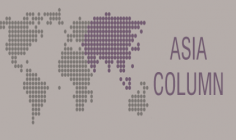
Overview of Intellectual Property Policy and Law of Korea in 2017 AHN, Hyo Jil (Korea University)1
I. OVERVIEW OF LEGISLATION AND POLICY IN 2017
(1) In the field of industrial property rights, the most significant legislative change in 2017 is the implementation of the patent cancellation system and the shortening of the patent review filing period.
In terms of policy, policies for strengthening the competitiveness of intellectual property of small and medium-sized enterprises (SMEs) were newly implemented. Hence, the Korean Intellectual Property Office (KIPO) has selected SMEs with high export growth potential as global intellectual property companies starting in 2017, and have started to provide customized support according to the needs of the company. In addition, in order to strengthen standard patents, policies to support research and development, standardization strategies and standard patent strategies have been put in place to promote the capacity of SMEs that have top-class technology capable of international standardization. In terms of tax benefits, when SMEs acquire external technologies such as patents, the tax credit for technology acquisition costs have increased from 7% to 10%. Further, policies to promote employee inventions by expanding the scope of non-taxable items to the application, registration and execution of employee invention compensations have been implemented. Previously, non-taxation was limited to patent registration compensation. As part
...THIS ARTICLE IS NOT AVAILABLE FOR IP ADDRESS 216.73.216.89
Please verify email or join us
to access premium content!
